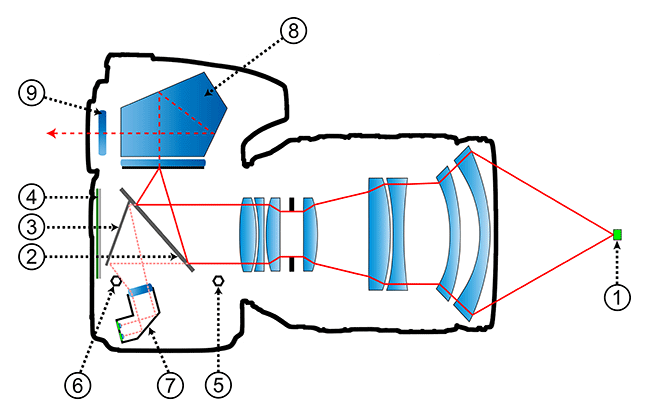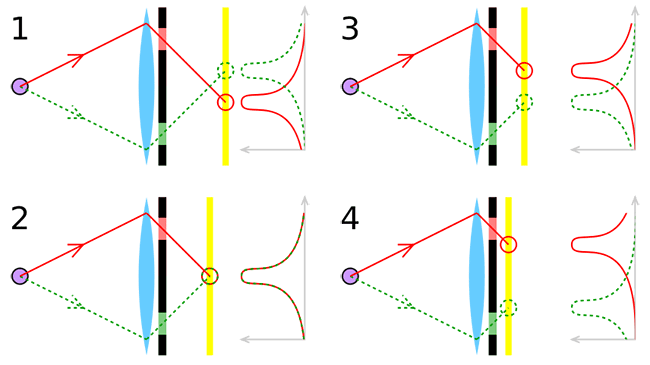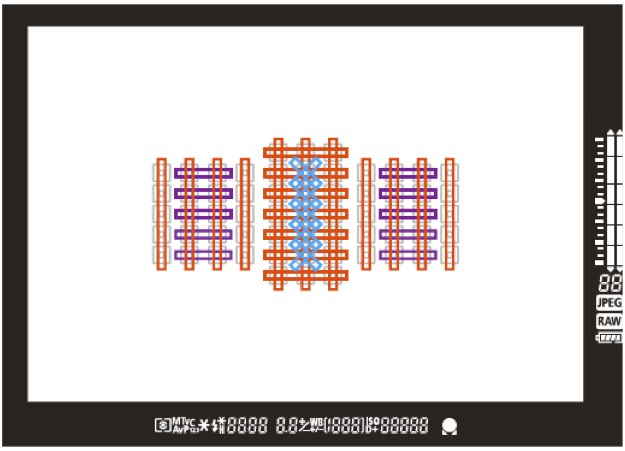كيف يعمل التركيز التلقائي لاكتشاف الطور
How Phase Detection Autofocus Works
عندما يتعلق الأمر بتقنية DSLR، يبدو أن هناك قدرًا كبيرًا من الالتباس حول كيفية عمل التركيز التلقائي للكشف عن الطور. في حين أن هذا قد لا يكون موضوعًا ذا أهمية كبيرة بالنسبة لمعظم الأشخاص، إذا كنت تتساءل كيف ولماذا يمكن أن تواجه الكاميرا مشكلة التركيز التلقائي، فسوف تلقي هذه المقالة بعض الضوء على ما يحدث داخل الكاميرا فيما يتعلق بالتركيز التلقائي عند التقاط الصورة. . هناك قدر هائل من ردود الفعل السلبية حول مشكلات التركيز التلقائي على أدوات جيدة مثل Canon 5D Mark III وNikon D800 وPentax K-5 وغيرها من كاميرات SLR الرقمية، ويبدو أن معظم المصورين لا يفهمون المشكلة الأساسية. لا يتعلق الأمر بالضرورة بطراز أو نوع معين من الكاميرا، بل بالطريقة المحددة التي تكتسب بها هذه الكاميرات التركيز. إذا بحثت على الإنترنت، فستجد الآلاف من تقارير التركيز التلقائي على جميع أنواع كاميرات DSLR التي يعود تاريخها إلى أكثر من 10 سنوات. ومن ثم، فإن مشكلات التركيز الأمامي والتركيز الخلفي التي نراها في الكاميرات الحديثة ليست شيئًا جديدًا - فقد كانت موجودة منذ إنشاء أول كاميرا DSLR مزودة بمستشعر اكتشاف الطور.
When it comes to DSLR technology, there seems to be quite a bit of confusion on how exactly phase detection autofocus works. While for most people this might not be a topic of great interest, if you are wondering how and why a camera could have an autofocus problem, this article will shed some light on what happens inside the camera in terms of autofocus when a picture is taken. There is an overwhelming amount of negative feedback on autofocus issues on such fine tools as the Canon 5D Mark III, Nikon D800, Pentax K-5, and other digital SLR cameras and it seems like most photographers do not seem to understand that the underlying problem is not necessarily with a specific model or type of a camera, but rather with the specific way these cameras acquire focus. If you search on the Internet, you will find thousands of autofocus reports on all kinds of DSLRs dating back 10+ years. Hence, the front focus and back focus issues we see in modern cameras are not anything new – they have been there ever since the first DSLR with a phase-detect sensor was created.
How Phase Detection Autofocus Works
عندما يتعلق الأمر بتقنية DSLR، يبدو أن هناك قدرًا كبيرًا من الالتباس حول كيفية عمل التركيز التلقائي للكشف عن الطور. في حين أن هذا قد لا يكون موضوعًا ذا أهمية كبيرة بالنسبة لمعظم الأشخاص، إذا كنت تتساءل كيف ولماذا يمكن أن تواجه الكاميرا مشكلة التركيز التلقائي، فسوف تلقي هذه المقالة بعض الضوء على ما يحدث داخل الكاميرا فيما يتعلق بالتركيز التلقائي عند التقاط الصورة. . هناك قدر هائل من ردود الفعل السلبية حول مشكلات التركيز التلقائي على أدوات جيدة مثل Canon 5D Mark III وNikon D800 وPentax K-5 وغيرها من كاميرات SLR الرقمية، ويبدو أن معظم المصورين لا يفهمون المشكلة الأساسية. لا يتعلق الأمر بالضرورة بطراز أو نوع معين من الكاميرا، بل بالطريقة المحددة التي تكتسب بها هذه الكاميرات التركيز. إذا بحثت على الإنترنت، فستجد الآلاف من تقارير التركيز التلقائي على جميع أنواع كاميرات DSLR التي يعود تاريخها إلى أكثر من 10 سنوات. ومن ثم، فإن مشكلات التركيز الأمامي والتركيز الخلفي التي نراها في الكاميرات الحديثة ليست شيئًا جديدًا - فقد كانت موجودة منذ إنشاء أول كاميرا DSLR مزودة بمستشعر اكتشاف الطور.
When it comes to DSLR technology, there seems to be quite a bit of confusion on how exactly phase detection autofocus works. While for most people this might not be a topic of great interest, if you are wondering how and why a camera could have an autofocus problem, this article will shed some light on what happens inside the camera in terms of autofocus when a picture is taken. There is an overwhelming amount of negative feedback on autofocus issues on such fine tools as the Canon 5D Mark III, Nikon D800, Pentax K-5, and other digital SLR cameras and it seems like most photographers do not seem to understand that the underlying problem is not necessarily with a specific model or type of a camera, but rather with the specific way these cameras acquire focus. If you search on the Internet, you will find thousands of autofocus reports on all kinds of DSLRs dating back 10+ years. Hence, the front focus and back focus issues we see in modern cameras are not anything new – they have been there ever since the first DSLR with a phase-detect sensor was created.




تعليق